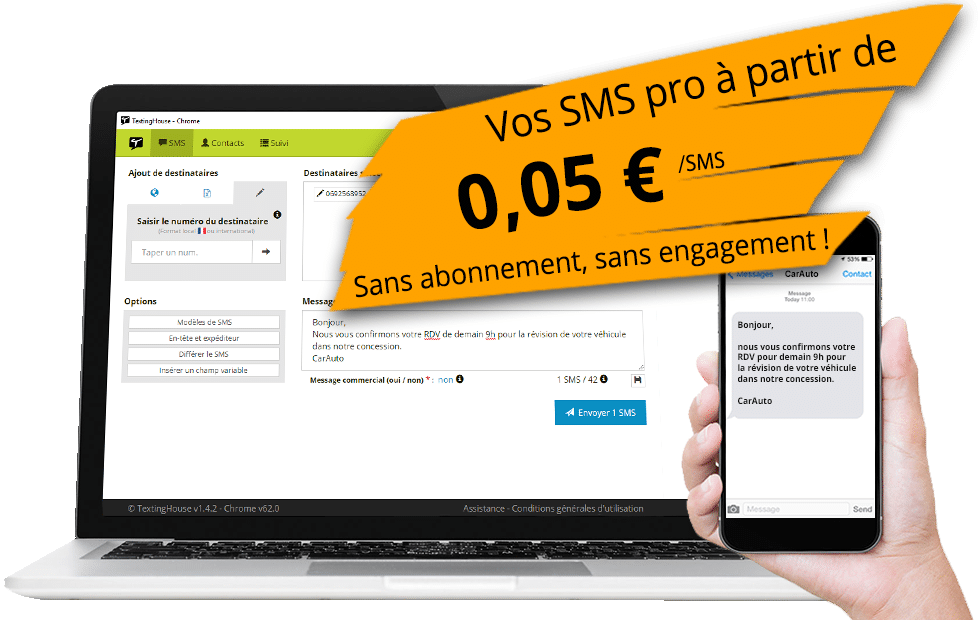Sending SMS is a powerful and essential marketing tool for businesses looking to communicate effectively with their clients. In this article, we guide you through the key steps to master the art of sending SMS to your clients.
Why is SMS Sending a Powerful Marketing Tool?
SMS offers unparalleled closeness and responsiveness in communication with your clients. With an average open rate of 90% and an average read time of 3 minutes, they allow you to quickly reach your target audience and achieve tangible results. Additionally, SMS is compatible with all mobile phones, without requiring internet access.
How to Obtain Client Consent for SMS Sending?
Compliance with current legislation is essential when it comes to sending SMS to your clients. Here are some steps to obtain their consent:
- Clearly inform your clients of the type of messages they will receive (promotions, information, etc.) and the approximate frequency.
- Provide them with a simple way to give their consent, for example, through a checkbox when creating a customer account or during an online order.
- Keep a written record of the obtained consent.
- Offer an easy and free way to unsubscribe at any time.
Choosing the Right Software for Bulk SMS Sending
Several software solutions are available on the market to manage your SMS campaigns. Here are some factors to consider during your selection:
- Features: automation, contact file import, message customization, customer base segmentation, delayed sending, URL shorteners, etc.
- Cost: free or paid, volume-based pricing.
- Ease of use and technical support.
- Integration with everyday tools like your internet browser.
Segmenting Your Customer Base for Personalized Messages
To maximize the impact of your SMS, it’s important to segment your customer base based on relevant criteria such as purchase history, product preferences, and behavior on your website. This way, you can send targeted and personalized messages that meet the specific needs and expectations of each group.
Concrete example: if you’re a chain of stores offering seasonal sales, you can segment your customers based on their geographical location and send them promotions tailored to their region.
Optimizing the Frequency and Timing of SMS Sending
Effective management of the sending frequency and timing of SMS is essential to avoid saturation and maintain your clients’ interest. Here are some tips:
- Avoid sending more than one SMS per week to the same client.
- Prioritize off-peak hours (between 10 am and 12 pm or between 2 pm and 6 pm) to increase the chances of reading.
- Adjust the timing based on events (sales, holidays, birthdays, etc.).
Measuring the Effectiveness of an SMS Campaign
To optimize your SMS campaigns, it’s crucial to measure their effectiveness. Here are some indicators to follow:
- Receipt rate: percentage of recipients who received the message.
- Click-through rate: percentage of recipients who clicked on a link included in the message.
- Conversion rate: percentage of recipients who took a desired action (purchase, registration, etc.) following the message receipt.
Analyze these data to adjust your strategy and improve the performance of your SMS campaigns.
Tips for a Successful SMS Campaign
Finally, here are some tips and techniques to create successful SMS campaigns:
- Craft short and impactful messages with a clear call to action.
- Personalize messages by using the client’s first name and tailoring the offer to their preferences.
- Test different formats (text only, link to a web page, image) and measure their effectiveness.
- Integrate SMS into a multichannel strategy in addition to other marketing channels (email, social media, etc.).
By applying these tips and choosing the right SMS sending software, you’ll be able to conduct successful SMS campaigns and significantly improve your relationship with clients.










